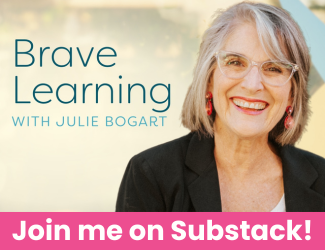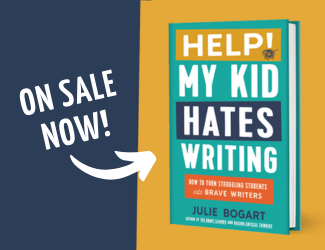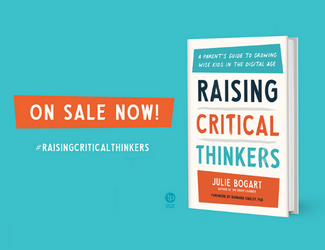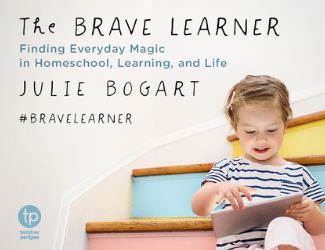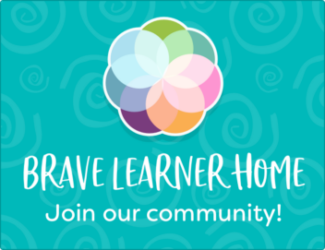If you could design a treehouse, what would it look like outside and in?
New to freewriting? Check out our online guide.
If you could design a treehouse, what would it look like outside and in?
New to freewriting? Check out our online guide.
Posted in Friday Freewrite | Comments Off on Friday Freewrite: Treehouse

Johannah is compassionate, an achiever, strongly sentimental, fiercely loyal to her family and friends, and a risk-taker. She’s the one who calls me and we talk for three hours, processing everything through a variety of lenses. I learn things from Johannah every time we talk.
Johannah has always enjoyed writing, too, which was a great pleasure to me. Johannah wrote a couple of “novellas” (long-ish stories that resembled novels) as an early teen. She told me she overheard me brag about a Brave Writer student who had written a novel, so she decided to write one too, to impress me. Then she would walk around the house with a red pen editing it, like she saw me do with my grad school papers.
Johannah was homeschooled all the way through high school, though she attended our local public high school part-time, participating in their theater program, French classes, British literature, and AP Psychology. She earned her Bachelor’s degree at Ohio State, where she majored in French and Culture Studies. In her sophomore year, she acted as president of the Amnesty International Chapter and organized/hosted a conference on human rights. During her time at OSU, she also studied abroad in Paris and spent a summer in Ghana working in a pediatric AIDS orphanage.
Johannah graduated in 2011. She took a position in France as an English teaching assistant at a junior high in Vichy for the following year. Now she lives in New York City, working as a social worker in the South Bronx.
I asked all five kids to send me a blurb about themselves to share with you. Of the five, Johannah was the only one who did. Naturally. I’ll let you hear her story in her own words. From Johannah:
“I’m currently an Americorps Volunteer in New York City. I volunteer full-time at a Foster Care Agency in the Bronx doing Therapeutic Recreation with young girls. I decided to move to New York City because I thought it’d be cool to live in one of the most expensive cities in the US without getting paid. [Note from me: These volunteers commit to living on $25.00/week!] After spending a year teaching English in France, I missed being in the United States but wanted to experience a new region, so the Northeast was a good fit!
“In my current position, I’ve found myself using a lot of homeschool techniques (they’re Brave Writer techniques now, but when I was little they were our homeschool), like treasure-hunting at museums and matching museum gift shop postcards to paintings. The concept of learning as an interactive, self-directed, never-ending process has been huge in the way I relate to the foster youth I work with. Instead of getting them comfort foods like ice cream and talking to them about teen drama at school, I’m able to introduce the kids to art and university libraries and book read-alouds in ways that make culture seem accessible and relatable.
“I also find myself acting like my mom a lot. At museums, I get really excited if one of my kids says she likes a painting and I want to know: **Why does she like it? What does she like about it? Which colors pop out to her?** I can see her wondering why I think her thoughts are so interesting.
“It reminds me of my mom and how thrilled she used to be when my siblings and I engaged with artwork. It’s incredible to see little people care about the world and have thoughts about it! I love it. Homeschool has made me an avid reader and has filled my notebooks with lists of things I need to learn about next time I’m online. I’ve met a couple homeschoolers since moving to NYC, which has been a big source of bonding and jokes about being weird. I’ve found that generally everyone I meet at this stage in my life has already known a couple homeschoolers and doesn’t have as many questions as people did when I was little. I’m having a great year and a great life!”
Caitrin and I went to see Johannah last week in NYC. Her life is intense, but rich. Her passion for disadvantaged kids is matched by her wisdom about how to invest in them. I’m reminded again that we are not just “educating” our children, but shaping how they understand what it is to have a meaningful life.
Johannah leads our Boomerang Book Club discussions for Brave Writer. She’s a poet (writes it, reads it), and a devoted student of literature. She’s a joy to her Dad (MA American Lit) and me, as we love seeing the fruit of all that reading together in her life now.
I love having grown children. I knew it would be wonderful to see them blossom. I didn’t know I’d learn so much from them. Johannah teaches me new things every time I’m around her. Nice payback for homeschool.
Posted in Family Notes, Julie's Life | 3 Comments »
The early-birds are busy curriculum shopping for next year while the exhausted are saving that work for July!
1. If the curriculum is new to you, don’t buy a year’s worth all at once (unless it’s your usual math text book). See if you can borrow someone else’s for a month or purchase one level or one aspect of the program and test it. The worst thing you can do is make a big non-refundable year long investment in an untested product, only to feel obligated to slog through it (dragging unhappy kids along) all 10 months because you “spent so much money.”
2. Talk to your kids about your curriculum shopping. Get them involved. Bring them to the computer, read them descriptions, show them what the products look like. Kids have strong opinions about colors, fonts, paper textures, how the app works, what the philosophy is. You don’t want those strong opinions slapping you upside the head on the first day of school! And remember: they are the ones using it. So even if it totally appeals to you, that doesn’t mean it’s right for your child.
3. Purchase cool STUFF not just cool books. Kids love microscopes, binoculars, digital camcorders, digital hand held audio recorders, iPads, tablets, sewing machines, knitting needles, garden tools, watercolors, oils, an easel, sculpting clay, dress up clothes, pocket knives, sleds, bird feeders, tambourines, hammers, saws, shovels, walking sticks, beads, hand mixers, baking tins, finger puppets, globes, tea sets, canteens, umbrellas, graphing calculators, a compass, rulers, puzzles, blocks, new Lego sets, dominoes, recorders, bells and whistles, clipboards, new journals, new pens (try fountain!), music, and movies … You get the idea.
4. Understand the philosophy of the product, not just its goals or promises. Just because a product says it teaches a comprehensive view of American history doesn’t mean that the view it teaches is a fair-minded one. Just because a product says it teaches manipulative-based phonics to 6 year olds doesn’t mean it’s the right philosophy for your 6 year old. The philosophy needs to match your child’s aptitudes as well as your style of implementation. If you’re a “follow the inspiration” parent, a highly structured program will not likely be successful for you. And vice versa.
5. Understand your own philosophy of home education. You want to carry the thread all the way through your subject areas. It doesn’t work to go from one system to another, subject-to-subject. Make a list of your bottom lines (what you must have to feel successful at home with your kids). Then compare those to the curriculum choices you make. Don’t chase the “shiny new” just because it is shiny and new. Create a rhythm for your family that matches how you all actually live, not how you imagine you should be living.
6. It’s okay not to have all your books and decisions made before the year starts. In fact, experiment with feathering in subjects over the course of the first few months. Try using one product for a little while, then add a subject and another product. This is the key to success. Trying to do everything, all at once, from the first day, understanding all the practices, ideas, strategies, and plans can be exhausting and stressful to all.
Feel free to only do language arts for the first two weeks, to finish before lunch, to play all afternoon. You can add math, once LA is under control and everyone feels good. You can add history a few weeks later, once those two are humming along. This gives you time to select products, too, once you see what’s realistic for your family. That big DVD program might appeal in July, but by October, you see that your life is already really full and a simple math book is easier for you to manage. So give yourself room and space to think about what you use next year while the year is going, if that helps you.
What tips do you have? I’d love to hear them.
Image by Andy Wright (cc cropped, text added)
Posted in Homeschool Advice | 2 Comments »
My name is Rebekah and my children are Micah (10 years old), River (5 years old), and Iris(2 years old). In these photos we are having tea and muffins of course, but my oldest son is also working on the Jabberwocky poetry activity from The Writer’s Jungle. We also had some fun math time with the little ones, and continued to read from A Midsummer’s Night Dream.
# # #
Posted in Poetry Teatime | Comments Off on Poetry Teatime: Muffins and the Jabberwocky
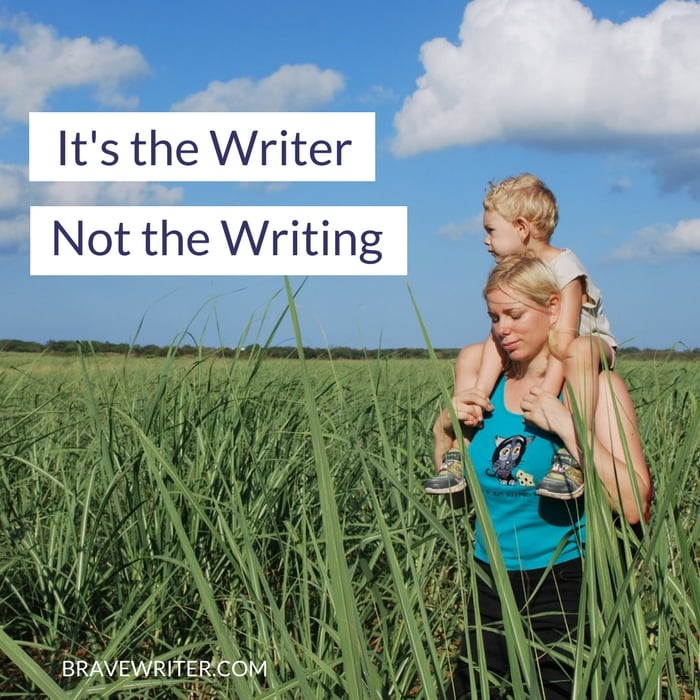
It’s tempting to see writing as something a person does, as assignments to complete, as skills to acquire for an academic or career purpose.
It’s tempting to evaluate the writing a person does as though it is a set of math problems—measurable, impersonal, external.
It’s tempting to push for completion, because the assignment or project has a due date or has to be done for the end-of-the-year evaluation.
Writing is not like other subjects. Writing is closely related to the self, no matter what the content. Even mothers sending me email get nervous thinking I will read their questions, and wonder what I will make of them, because they are undressing their minds right in front of me. What will I see? How will I react?
How much more kids feel that way?
Academic formats require as much “soul investment” as fan fiction and diaries. You must be just as gentle and curious with an expository essay as you were with the story about your child’s pet gerbil.
Writers express what lives inside them. Writing is the form it is put in. Expression deserves respectful care. Mechanics deserve minimal care. Expression matters the most. Mechanics are marginally important.
Work on the two components (mechanics and expression) separately and teach your writer to take responsibility for editing mechanics and getting someone to help him or her see what he or she can’t see without a second set of eyes.
That’s it. That’s all the attention mechanics deserve. They do not make or break the essence of the writing. They merely punctuate it, so someone else can approximate the tone and meaning the writer intends.
Brave Writer not brave writing.
Learn More: The Difference Between Brave Writer and Other Programs
Posted in Brave Writer Philosophy, Homeschool Advice, Writing about Writing | Comments Off on It’s the Writer, Not the Writing

I’m a homeschooling alum -17 years, five kids. Now I run Brave Writer, the online writing and language arts program for families. More >>
IMPORTANT: Please read our Privacy Policy.









